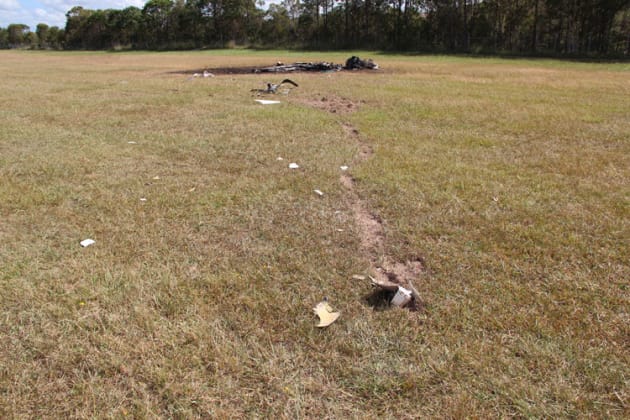The Australian Transport Safety Bureau has determined that a skydive Cessna 206 crashed at Caboolture in 2014 because of an aerodynamic stall, although it was unable to identify why the aircraft stalled.
U206G VH-FRT took off from Caboolture on 22 March 2014 with a pilot and four parachutists on board. Witnesses said the Cessna climbed to about 200 feet when it started to turn left and the nose dropped. The aircraft crashed into the ground, killing all on board.
"The aircraft aerodynamically stalled at a height from which it was too low to recover prior to collision with terrain," the investigation report released today says.
"The reason for the aerodynamic stall was unable to be determined. Extensive fire damage prevented examination and testing of most of the aircraft components. Consequently, a mechanical defect could not be ruled out as a contributor to the accident."
The investigation report examines the possibility that the pilot's seat could have moved rearward during take-off because the rear seat-rail stop had been reported missing in the week before the accident. The ATSB also looked at whether the co-pilots control column could have been interferred with given that video footage taken in the aeroplane previously showed the yoke missing but the control column still intact.
The ATSB also found maintenance issues with the aircraft, in particular an undocumented nosewheel repair and rear fuselage damage, that could have reduced safety margins.
The full report into the crash is on the ATSB website.



